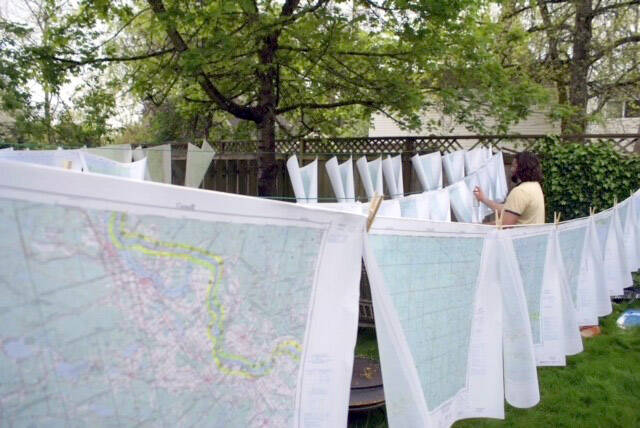Editor’s Note: This is the second of a four-part series.
Now I have done a fair amount of whitewater kayaking and canoeing, but trying to cross North America in a kayak in a single season was a completely different sport, one that I knew almost nothing about.
I had never even been in an expedition kayak before, but I found myself setting out to retrace the voyageur’s route from Lachine, Montreal, to Nome, Alaska.
I began reading every book I could find about voyageurs and expedition kayaking. I waded through vast amounts of information, trying to decipher the route.
Finally, I had a breakthrough when I discovered Max Finkelstein’s book “Canoeing a Continent: On the Trail of Alexander Mackenzie.”
Finkelstein’s detailed account of Alexander Mackenzie’s route through North America was instrumental in putting this puzzle together.
McKenzie was the first European to cross North America in 1793, 13 years before the Lewis and Clark expedition. Finkelstein paddled the route in three sections over three summers.
Finkelstein writes about men and women who have completed cross-continent canoe and kayak trips. The fellowship is small, but they are out there.
Many did it in sections or pairs, but there was one man he mentions who did it alone in a single season and wrote a book.
In May 1999, 21-year-old Ilya Klvana left Prince Rubert, Canada, in a homemade cedar strip kayak and arrived in L’ Anse aux Meadows in Newfoundland, Canada, on Nov. 22. Klvana’s book was what I needed.
The only problem was “Coureur Des Bois,” Klvana’s book, was written in French. But my beautiful future wife translated the entire book using Google Translate.
Although imperfect and hard to read, because of the translation, I gleaned valuable information from this book. I decided I wanted to build my kayak and a portaging system like Klvana had done.
I had finally figured out my route. So, in the winter of 2013, I set out in earnest to make this trip a reality. My sister and I came up with seven soups and seven bars that could be dehydrated, and were very nutritionally dense.
I hired her to make six months’ worth of soup and bars. She later told me that she would never have taken the job if she had known how labor intensive it would be. Her husband said they had to move to get the smell of soup out of their nostrils.
I bought maps for the entire route. Since the waterproof ones were twice as expensive, I purchased the paper ones. I strung a hundred feet of parachute cord back and forth across the yard, hung the maps up, and sprayed them all with Thompson’s WaterSeal.
I divided the food, maps and a few other items into nine boxes my sister would mail ahead of me as I traveled.
I bought a book on building a cedar strip kayak. I ordered cedar strips, epoxy and fiberglass cloth. In the evenings, after work, I started making my boat. It was coming along beautifully until it was about 98% completed, and I ran out of cedar.
Undeterred, I contacted the supplier, but they were out of stock. He said he only had a handful of subpar pieces. I had no choice but to tell him to send me any scraps he had, which would take weeks to arrive, cutting into my timeline to get my boat shipped.
My goal was to leave on May 1 from Montreal, and I needed my boat ready to ship by March. So, I surrounded the kayak with heaters and fans to speed up the hardening-off process. The night before I shipped it, I was still applying the last coat of epoxy and praying it would continue to finish hardening off in the crate.
The real journey begins in Article 3.
Nate Grinnell is a seasonal on the Kenai National Wildlife Refuge trail crew, with deep ties to river adventures. Find out more about refuge events, recreation, and more at kenai.fws.gov or Facebook: https://www.facebook.com/kenainationalwildliferefuge and more Refuge Notebook articles (1999–present) at https://www.fws.gov/kenai-refuge-notebook.


